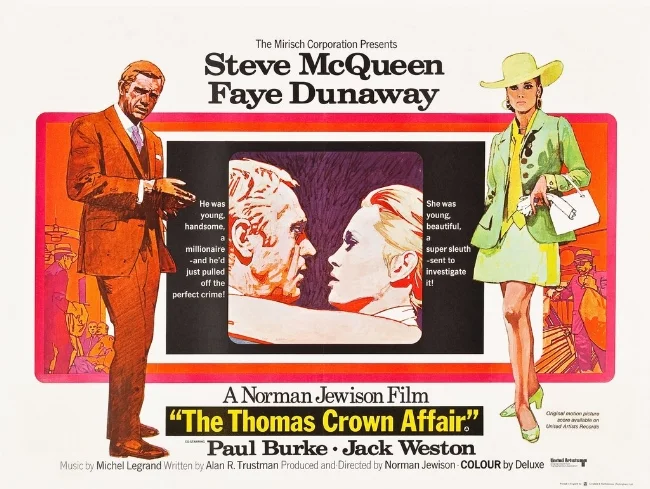Bullitt (1968)
In a recent blog post I wrote about the difficulty that you can encounter sometimes when trying to watch movies that have been deemed “classic” by popular consensus. I listed 10 films of note that I intend to watch this year and to see if my views aligned with the various institutions and critics that praise them. The first on that list was the iconic sixties thriller Bullitt starring Steve McQueen. Having now watched the movie, I thought it would be prudent to collate my thoughts on it. Considering the immense amount of material that has already been written about it, I see no reason to present a review per se. Rather, here are my initial impressions for consideration. I’ve tried to highlight some specific aspects of the film that I think are of note or merit debate.
The cinematography in Bullitt is noticeably stylish and beyond the functional. William A. Fraker uses a lot of low camera angles, fluid camera movements and even embraces a Gonzo style for crowd scenes. The way bystanders congregate around crime scenes is depicted quite differently from other movies of the time. It is shown as rather unpleasant and insensitive act, often reflected in the snatches of dialogue that are heard. The famous car chase sequence is edited in similar fashion that places the viewer very much in the middle of the action. Rather than just rely on single shots from locked off cameras, the set piece is covered from multiple angles and frequently from the perspective of the vehicles themselves. It also conveys the fact that high speed pursuits are not just about performance vehicles but require skill from the drivers.
Then there is the matter of violence and the way in which it is depicted in the movie. Hollywood was shifting its stance on this weighty issue during the late sixties. As a result, there is a rather clinical shooting involving a shotgun. During the climatic shootout in the airport departure lounge there is an interesting concession to human collateral damage, when a security guard is gunned down in a very casual manner. We later see him getting the last rites from a passing priest, thus showing that death is seldom quick in such situations. Another interesting aspect is the depiction of two hired contract killers. They are not shown as sneering stereotypical gangsters but more as ageing business men. Furthermore, there is no snappy banter between them. Instead we are left with a measured silence and a few meaningful looks.
Something else that stands out about Bullitt is the accurate depiction of police investigation techniques of the time. There are no desktop computers and a lot of work is completed by copious note taking and attention to detail. We see evidence being meticulously being sorted through to see if it will yield any detail. The telephotography machine that prints suspects photos via the phone and a dot matrix printer is paradoxically archaic yet very contemporary. Then off course there’s the plot device of politics impinging upon police work. The sixties were a time when the default deference towards various public institutions was beginning to fade. Captains wanting an easy life and not wanting to rock the boat, as well as career driven Senators happy to tread on toes to get ahead, were new concepts back then.
Bullitt overall met and exceeded my expectations. The plot was interesting and its themes still relevant. Steve McQueen was effortlessly cool in the title role and the movie seemed to capture the changing mood of the period. The car chase was technically well executed and I can certainly see how the movies entire approach had a knock-on effect upon other thrillers and particularly cop movies. Sadly, Jacqueline Bisset’s character Cathy has precious little to do within the functional role of Frank Bullitt’s love interest. Sexual politics were obviously not on this film’s primary agenda. However, Lalo Schifrin’s superb jazz driven score is still a thing of beauty and reflects the idiom of the decade. Therefore, I appreciate why Bullitt enjoys the status that it currently does. It will be interesting to see if the next movie on my list also makes the grade.









